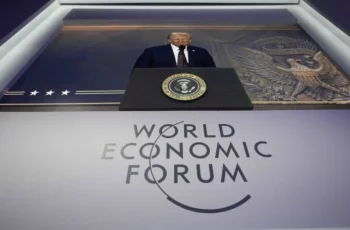
It’s about turbocharging the emerging Turkish-Azeri-Pak bloc by giving Islamabad access to TRIPP for facilitating trade with Turkiye and Europe in order to consolidate this bloc’s sway across Central Asia.
The Armenian and Pakistani Foreign Ministers signed a joint communique on the sidelines of the SCO Summit in Tianjin establishing diplomatic ties. Pakistan was the only country in the world that didn’t recognize Armenia out of solidarity with Azerbaijan in the Karabakh Conflict. Now that it’s resolved and Pakistan’s US patron got those two former rivals to agree to the “Trump Road for International Peace and Prosperity” (TRIPP), which replaced Russia’s role, Pakistan saw an opportunity to recognize Armenia.
This isn’t being done as the prerequisite for free trade talks with the Russian-led Eurasian Economic Union of which Armenia is part and with whose leader Pakistan has recently drawn close. After all, Prime Minister Nikol Pashinyan confirmed long-running speculation in late August that Armenia might withdraw from that bloc as it moves closer to the EU, so this isn’t driving Pakistani policy. Rather, this is part of a larger powerplay in Central Asia, albeit one that’s cloaked in the guise of its rivalry with India.
The resumption of large-scale Armenian-Azerbaijani hostilities in late 2020 had the unintended consequence of expanding the Indian-Pakistani rivalry to the South Caucasus. Pakistan extended political (and reportedly also military) support to Azerbaijan for the previously mentioned reason while India did the same to Armenia as a counterweight to the emerging Turkish-Azeri-Pak bloc. India’s arms sales to Armenia then continued to grow to the point where India became Armenia’s largest arms supplier.
These purchases weren’t just driven by military-security considerations vis-à-vis Azerbaijan but also by political ones with respect to Armenia diversifying from its hitherto dependence on Russian equipment. The US-brokered TRIPP corridor, the resultant de-escalation of Armenian-Azerbaijani tensions, and the new establishment of Armenian-Pakistani diplomatic ties might soon lead to less Indian imports, which would then predictably be spun by the emerging Turkish-Azeri-Pak bloc as a victory over India.
The truth though is that the expansion of the Indian-Pakistani rivalry to the South Caucasus never had much of an influence over regional events. The most important factor by far wasn’t their growing ties with Armenia and Azerbaijan respectively, but the course of the Russian-US rivalry, which ultimately led to setbacks for the first and gains for the second. The outcome was that Armenia, which has since become an Azeri-Turkish protectorate, became receptive to establishing diplomatic ties with Pakistan.
While this might be sold to the Armenian public as opening up new markets, its leadership is really moving in this direction in order to turbocharge the emerging Turkish-Azeri-Pak bloc by giving Islamabad access to TRIPP for facilitating trade with Turkiye and Europe. If China’s attempts to mediate a rapprochement between Afghanistan and Pakistan succeed, which they may not, then Pakistani exports could transit through there to Turkmenistan and across the Caspian to Azerbaijan, TRIPP, and beyond.
Therefore, while the emerging Turkish-Azeri-Pak bloc might hype up the symbolic setback for India that the establishment of Armenian-Pakistani diplomatic ties represents, that would just be a diversion from the larger powerplay taking place along Russia’s entire southern periphery. A whole new center of influence is forming there before the world’s eyes with the US’ full support, which could greatly undermine Russia’s, India’s, and Iran’s shared geostrategic interests in this space if it isn’t kept in check.
Source: author’s blog










Comments